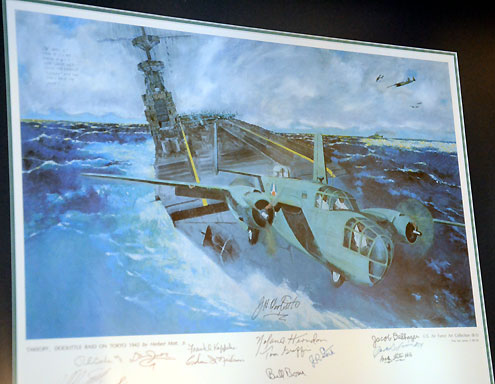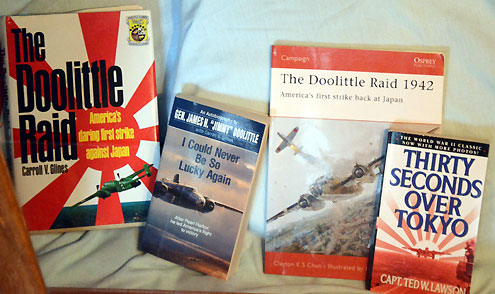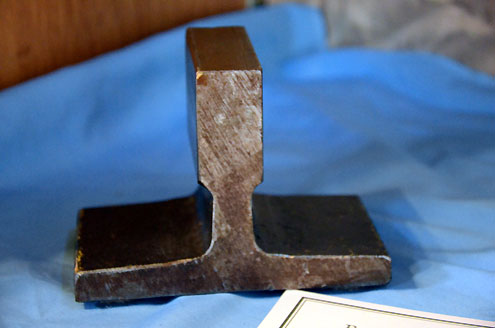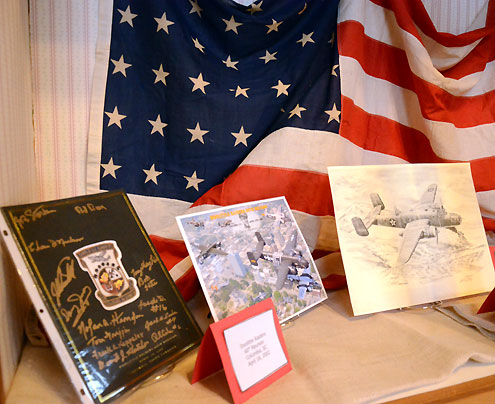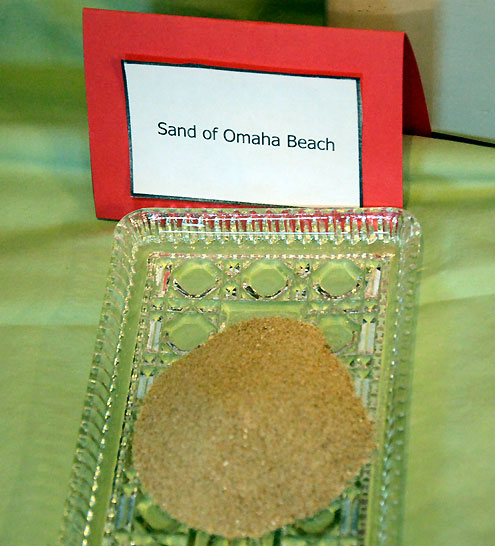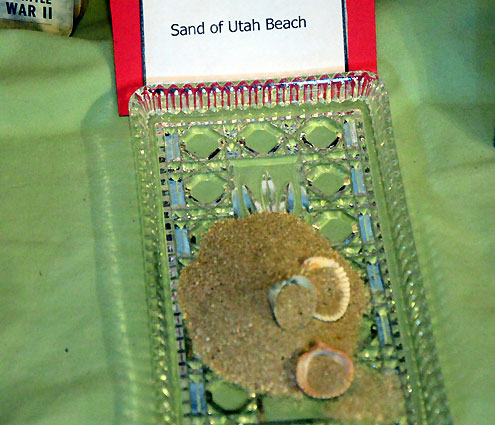Bonham -- Thanks to the generosity of a Bonham native, Fannin County Museum of History now has a unique display highlighting the daring World War II mission conducted by Doolittle's Raiders, including a print autographed by members of the Raiders as well as other WWII memorabilia.
The donor, Don Dodson, grew up in Bonham and graduated from Bonham High School in 1960. You may have followed his TravelQuest articles in North Texas e-News, where groups of North Texans travel together, primarily in Europe, but also including an African photo safari in 2014.
Don is now a retired professor and university administrator where he was Chancellor of a twelve-campus university. He is also the former Executive Director of the American Academy of Health Administration. He is the author or contributor of six books, and numerous reference articles. He says any claim to fame is that he was selected to Outstanding Young men in America in 1978, the same year Elvis Presley was selected. Don was on the research team at the University of Tennessee which reviewed emergency systems in the United States. After presentation to Congress, this led to the widespread use on emergency 911 in the United States.
After the attack on Pearl Harbor on December 7, 1941, America had not only lost much of its naval power, but was also psychologically devastated. President Roosevelt wanted to attack the Japanese mainland as quickly as possible to restore faith in our military and give us confidence as a nation.
A plan was developed where B-25s would be converted to fly from an aircraft carrier, and return to that carrier after a bombing raid over Japan. The odds of success were long for several reasons, and it was dangerous beyond words. The unknowns were enormous.
Eighty young men volunteered for the mission, knowing only that it was dangerous, and they may not come back alive. Now the story of these brave men is well known, as they became known as Doolittle's Raiders.
The plan was to get within range of Tokyo, and be able to return to the Carrier Hornet. But a boat, thought to be a spy craft, was spotted before the carrier could get close enough to Tokyo for the planes to return.It was feared that the boat had alerted the enemy of the carrier's position, so the decision was made to leave immediately to maintain the surprise element. These brave men knew they would not have fuel to return to the carrier, and would have to crash land in China, which was occupied by the Japanese. But they did not waiver in their devotion to their country and to the mission.
The successful raid gave the United States a much needed victory - a victory that we had for the first time since we had invaded the Japanese homeland.
Some of the Raiders were killed during the mission, some were captured after crash landing, and some were aided by the Chinese and were returned to safety. But, their place in American history is ever lasting.
"Since my first year in college, I have had a love affair with history, thanks to a brilliant professor who built a fire that grows stronger with each passing year under that eighteen year old," says Don. "My wife, Carol, has endured my obsession with almost anything historical. I have travel information and cluttered history books all over the house.
"The Doolittle Raiders trained in Columbia, SC, now my residence. Each year the Raiders hold an annual reunion, their last being this year as they are old men and unable to travel any longer. Today only four Raiders survive.
"On their 60th reunion they returned to Columbia. For a birthday gift Carol got us tickets to the dinner honoring the Raiders. But she did more than that. She called the retired general in charge of the event and told him how much this would mean to me and if any way possible, please provide seats close to the stage.He did not comment, and when we received our tickets, we had no idea where they were located.
"The event was held in the largest ball room in the city, with a makeshift 'stage' about four inches high for the speakers. Hundreds were ion the ball room, with hundreds more in adjoining rooms watching on closed circuit TV. We got there early because I was hoping to get to see some of the Raiders. I make it a practice to always thank a veteran for their service, and I certainly wanted to do so on this occasion.
"They had set up a small store to sell various memorabilia made especially for this annual reunion, so I put on my shopping clothes and bought everything in sight. Behind the booth was a print of the Mitchell B-25 leaving the hornet. I asked about it and found that only four were left, and Gen. Doolittle had signed it before his death. It was also signed by his son. That print had to be mine. And it is.
"When the doors opened, the usher pointed us to our seats. The good general had come through and we absolutely had the best seats in the house. The seating was arranged in tables of eight, and our table was two feet from the stage, dead perfect center as we say in Texas.
"But even better was when the Raiders started coming in and they were seated all around me -- left, right, and behind, with the stage in front. I was one giant goose bump! At our table was the daughter of one of the Raiders. What an evening it was! After the ceremonies I got to meet all the Raiders and thank them.
"I am not much for wearing patriotic clothing, but on this occasion I wore an American flag tie. One of the raiders commented how much he liked that tie. Without even thinking, I ripped it off and handed it to him. He said he would give me his tie, but only a Raider was allowed to wear it. And the next morning at an autograph signing, he wore that tie I had given him. I was as proud as a peacock. When I got to him, he said he sure did like that tie and was I sure I did not want it back because it was a 'nice tie.'"
The Fannin County Museum will be displaying the autographed print, along with additional memorabilia from the 60th reunion, as well as other World War 11 items, including books, photos, scale models of the Hornet and a Doolittle B-25. Some items of particular interest are a piece of steel from the Yorktown, and bronze medallions from the D-Day beaches in Normandy. There are also bottles of sand from both Omaha and Utah beaches.
